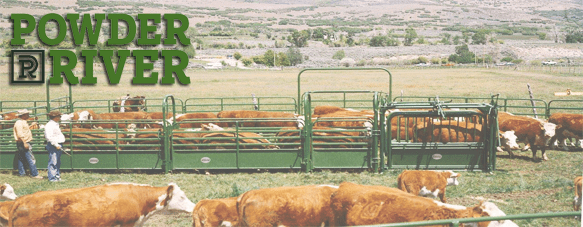
OFI 1002: To Move To Montana In Winter
The summer that I turned 19 I did a solo road trip from California to Idaho to Montana and then back home again. At some point on that trip for some, unknown reason, I found myself in the admissions office of Montana State University. I got talked into filling out an application to attend college there and paid the $30 fee to apply.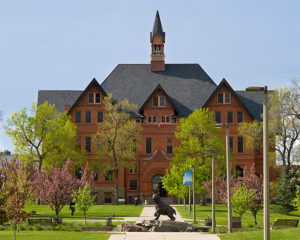
By the time I got home to my parent’s house my mother was already holding an envelope with the Montana State University emblem where the return address goes. She had a concerned look on her face, and she asked me what this was all about. We opened the envelope together, and the letter said something to the effect of, “welcome to Montana State University”. This was back in the days when many of our land grant universities had plenty of space in classrooms and empty dorm rooms when the semesters began. So, they were eager to accept students. They must have accepted me and sent that letter the day that I filled it out!
My mother and I went completely different directions emotionally after we read that letter. She went down the road of her son’s transfer from Modesto Junior College to a four year university somewhere far away coming way too soon. I went down the road of excitement and elation, dreaming of cattle ranches, mountains and big winter snows.
Many discussions were had about out of state tuition, the dangers of winter travel and independence. I was already registered and paid up at Modesto Junior College for my third semester of post-high school education. I had lived in the Central Valley of California my entire life. Including trips to a cabin in the Sierra Nevadas, I could still count the number of times I had actually seen it snow in my life on both hands.
I had always wanted to live somewhere with a real winter, with snow piling up and temperatures going down. Now, it was going to happen. I wasn’t just going to go to college. I wasn’t just going to move out of my parent’s home for the first time. I was going to find adventure.
I started my education at Montana State University in Winter Semester of 1993. The semester began in January, and the entire West had quite a winter that year. For me to get to Montana I had to get over the Donner Pass on Interstate 80 between Sacramento and Reno. That pass was being closed so often than winter that I actually ended up leaving for college about five days early during a break between storms when the pass was open.
After a few days staying with friends in Boise, Idaho I headed out for Bozeman the day after a rare blizzard in Boise. I was now in a real winter, and that day driving from Idaho to Montana showed me that almost immediately. I hit ice and slid into the median of Interstate 84 near Glenns Ferry, Idaho that morning. Luckily, I was able to spin my way out in my little, two wheel drive Nissan pickup, but I could only get out into the westbound lanes. So, I had to back track to Hammett, Idaho, exit and get back in the eastbound lanes. I proceeded east again…only slower.
Somewhere between Rupert, Idaho and American Falls I found myself being the first vehicle to reach a jackknifed semi that was blocking both lanes of traffic. I had never experienced anything like an interstate being blocked before and just waited there patiently for the big wreckers to get him back on the road. I was nervous but exuberant at all of the snow around me.
An hour or so later, now heading north on Interstate 15 almost to Idaho Falls, I started seeing signs that the interstate was closed 50 miles ahead. I could not believe that they would purposefully close an interstate and convinced myself that I must not understand what I was reading. So, I did not exit. I proceeded with my original plan.
After I passed the final exit for Idaho Falls the interstate changed from pavement with patches of snow to being completely snow packed. I for some reason thought this made the driving conditions safer and increased my speed considerably. It is only by the Grace of God that I did not also pay for this lack of knowledge about driving in winter conditions.
Dubois, Idaho is about 50 miles north of Idaho Falls on Interstate 15. Just as the signs had predicted, when I got to Dubois, the interstate was closed. There was a Chevron gas station and grocery there, and the parking lot was jammed full of idling cars and pickups. I pulled in and spoke to some folks. I turned out that many of these people had been there for almost 24 hours, waiting for the Interstate to open up. However, high winds coming off of the continental divide up near Monida Pass were creating drifts and zero visibility on the interstate. So, the Idaho Department Of Transportation had the whole thing shut down.
I got some snacks at the store and did what everyone else was doing, sat in my idling pickup with the heat blasting waiting for something to change. It was dark now, and the wind was howling, but it was not snowing. It had been a long day, and the pickup cab was warm, so I decided to get some sleep. After some hours had passed I heard some vehicles starting, some vehicles revving as they left their parking spaces and the crunch of tires on the packed snow in the parking lot.
Somebody going by told me that the Idaho Department Of Transportation had decided to lead everyone over the pass with snow plows. The wind was only on our side of the pass, and there was no drifting on the Montana side. So, I hopped back into my pickup and quickly got in the back of the line of all the departing vehicles.
Apparently I had not had the fan on my defroster turned high enough or I was to cheap to run the air condenser in conjunction with the defroster or I just did not know that I could run the A/C in conjunction with the heat to lower the humidity in the cab, but all of the mouth breathing that I had done while sleeping had fogged up all of the glass on the inside of the cab except for a small hole of visibility where the fans blew the most hot air on the windshield. And, everyone was departing. It was now or never. I didn’t have time to do anything about it. So, I found the pair of taillights in front of me and focused on them as we turned towards the great white north on Interstate 15.
It was immediately apparent why the Interstate had been closed. The wind continued to howl from west to east, right across the roadway. It was not snowing, but there was snow everywhere in the air making visibility almost impossible. I did not know if this was just from drifting snow, or if the snow plows leading this caravan had kicked up so much snow that it was all being blown around us. Either way, I could not see the road or any white lines. I knew that if I lost the tail lights in front of me, I would lose the road completely. And I prayed that driver would not lose the tail lights in front of him and so on and so forth.
I have no idea how long it took us to get to the top of Monida Pass, but as we neared the summit visibility started to improve dramatically. I still was peering through a small area of my windshield that was not distorted by condensation but I could see the most magnificent stars through that 8 inch circle. I don’t know what it is about late winter nights in cold, cold temperatures that makes the stars sparkle so much vibrantly, but they do. And, I will never forget that sight.
With the increase in visibility I could see all of the tail lights ahead of me, and I could see the snow plows that had pulled into the median and were heading back towards Dubois. I could see mountains lit up by the stars and moon with the snow reflecting and making it almost seem like daylight. And, I saw the sign welcoming me to Montana, and I had a small outburst of celebration and started signing whatever song was playing on the radio at that moment.
Soon, I was heading downhill towards Lima, Montana. I must not have been the last vehicle in the caravan because I was getting passed like I was standing still. After my earlier slide off and seeing the jackknifed semi, there was no way that I was going to drive too fast. But, all these people behind me, seeing that the road was not snow covered really put their foot into it. It would take me years to be comfortable driving in freezing temperatures at speed and with the knowledge that two things are needed to make ice on the road, not just cold temps.
I think it was about the time that I was getting to the valley floor that it happened. Just when I thought I was in the clear everything changed. At some invisible line of elevation the temperature dropped drastically, and my little pickup did not like it one bit. I can still remember the sound of the condensation on the inside of my pickup windows instantly freezing. It was some sort of loud pop, almost like a twig snapping.
Almost simultaneously I felt a very cold wind, not a draft, but a wind, blowing on my left foot nearest the clutch. That had never been there before. And moments later the check battery indicator on the dash came on. I had the radio playing and the defrost fan blowing on high, and I was using a lot of electricity. So, I shut off the radio to try and preserve whatever of the batter that was left.
All the other vehicles had passed me, so now it was just me, the snow, the cold and the sounds of the road and the fan. I reached out and touched the driver’s window and the windshield. I could not draw in the condensation any longer. It was now all frost. I figured that however cold it now was outside the metal on the pickup had shrunk enough to allow this breeze to be blowing on and freezing my left foot. I started to realize the gravity of my situation, and my thoughts began to wonder what I would do if my pickup died because the battery failed.
Looking back, I am glad that I wasn’t much of a reader. Had I ever read “To Build A Fire” by Jack London, I would have probably have convinced myself that I was doomed. As it was, I started studying my surroundings and what a contingency plan might be.
There is a reason that stereotypes about naive Californians moving to the Rockies exist. It is because they are true. Never was there a better example of this than me on this cold, cold night.
Looking out of my windshield peep hold I could see flashing lights up the mountains to my east. There were no houses or farms around that I could see. Because it was so cold and the winters so extreme here, I assumed that the state government probably had developed warming shelters for people stranded outside on nights like this. Therefore, I convinced myself that these flashing lights must be the markers for these huts, and if my pickup were to die I would just have to walk through the snow to the base of one of those flashing lights to find a warm, safe place.
I don’t mean to spoil the story, but you now know that the battery never failed. Obviously, had that happened and had I trekked out to find one these imagined warming huts I would not be here to write this story today. The flashing lights were of course indicators for aircraft. To this day I don’t know if they were warning of power lines or just high peaks. I assume it was power lines, but I never took this route from Bozeman to Boise again, so I never verified anything.
Being a naive Californian, I had assumed that the best route to Bozeman was all interstate. So, rather than turning off in Dillon and cutting over to Whitehall I stayed on Interstate 15 all the way to Butte with the intention of getting Interstate 90 there and heading east to Bozeman.
I reached Butte at about 1:00 AM, about 18 hours since I had left Boise. I have drive Boise to Bozeman countless times since then, and it is never more than a 7.5 hour drive. However, this was a marathon with many obstacles thrown in my way.
By the time that I hit Butte I had, had it, and I figured that I had better count my blessings and call it a night. It wasn’t in my budget, but I pulled into a motel and got a room for the night only to learn that the temperature was in the range of 30 below zero.
I slept until about 9am the next morning, and started my pickup at about 10am. The temperature was now about 10 degrees below zero but the sun was shining, which it tends to do in Montana on its coldest days. The radiant heat had helped to defrost the inside of my pickup windows, and now I could see the aftermath of the snow storm in all of its grandeur.
In the light of day I started to realize just how naive I had been just one day before, and I couldn’t understand some of my thinking – especially about the warming huts. It is true that coming over that pass and entering Montana I was a naive Californian. But Montana winters do not allow you to stay naive for long, and I already felt more seasoned than just 12 hours earlier.
I made my way to Bozeman and moved into Roskie Hall on the western edge of the Montana State Univeristy Campus. I had a couple of days before classes started, and at my first opportunity I went straight to the Montana License Bureau and got Montana license plates for my pickup. And I never told this story to anyone until I had proven myself in that incredible state. Even after becoming a hunter, living and working on a cattle ranch all winter, pulling Montanans out of the ditch with my (new to me) truck I still wasn’t sure that it was time to tell this story for the shame of being a naive Californian.
More Places You Can Listen to Off-Farm Income And Matt Brechwald:






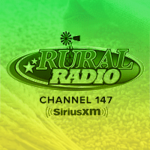
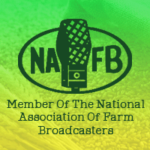

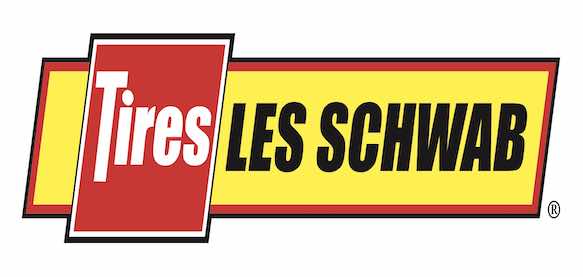
Leave a Comment